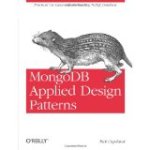Objects are seldom is simple list of KV pairs!
More often than not they are complex data structures that contain dates, geo, objects, arrays of values etc.
sooner or later you’re going to want to store these objects (in a database), trying to do this with the rows and columns of a relational DB…means flattening the object to fit the schema – usually one field per column – and then have to reconstruct it every time it is retrieved
Consider this JSON document:
{
“email”:”x@y.com”,
“first name”: “john”,
“last name”: “smith”,
“info”: {
“bio”: “Some blurb……”,
“age”:41,
“interests”: [football, cricket]
},
“join_date”: “2015/15/2”
}



